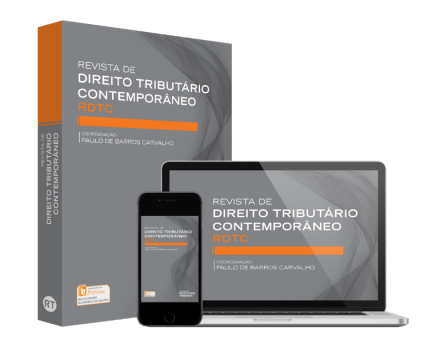A EXTENSÃO DOS TEXTOS DAS IMUNIDADES TRIBUTÁRIAS: COMO A INTERPRETAÇÃO ATENDE A UMA TEORIA EVOLUCIONÁRIA – A IMUNIDADE PREVISTA NO ART. 149, § 2º, I, DA CONSTITUIÇÃO FEDERAL
Revista de Direito Tributário Contemporâneo
A EXTENSÃO DOS TEXTOS DAS IMUNIDADES TRIBUTÁRIAS: COMO A INTERPRETAÇÃO ATENDE A UMA TEORIA EVOLUCIONÁRIA – A IMUNIDADE PREVISTA NO ART. 149, § 2º, I, DA CONSTITUIÇÃO FEDERAL
Autor Correspondente: F. D. P. Tomé | [email protected]
Palavras-chave: imunidade, constructivismo, interpretação, intratextualidade, princípios
Resumos Cadastrados
Resumo Português:
Pretendemos mostrar como o legislador pode construir os textos imunizantes para que não haja limites interpretativos capazes de violar princípios constitucionais fundamentais – como deve ser – e, para tanto, utiliza-se, como exemplo no decorrer do trabalho, a atualíssima manifestação do Supremo Tribunal Federal na formação do Tema 674, RE 759.244, em reconhecer a extensão da imunidade prevista no art. 149, § 2º, I, da Constituição Federal, alcançando a operação de exportação indireta realizada por trading companies, ou seja, decidiu que a exportação indireta de produtos não está sujeita à incidência de contribuições sobre as receitas, fixando, assim a tese “A norma imunizante contida no inciso I do § 2º do art. 149 da Constituição da República alcança as receitas decorrentes de operações indiretas de exportação caracterizadas por haver participação de sociedade exportadora intermediária”. O legislador deve ter cuidado com o conteúdo do texto para que não ocorra limitação quando ele é interpretado, sabendo diferenciar as imunidades subjetivas e objetivas e garantindo o alcance dos objetivos constitucionais, embora seja de conhecimento que as imunidades objetivas não devem receber interpretações teleológicas na mesma medida que as subjetivas recebem. Pretendemos concluir pela importância da interpretação fazendo bom uso de ferramentas apresentadas pelo construtivismo lógico-semântico para que, nesse caso, a imunidade seja reconhecida e aplicada de forma a respeitar demais princípios e objetivos constitucionais.
Resumo Inglês:
We intend to show how the legislator can construct immunizing texts so that there are no interpretative limits capable of violating fundamental constitutional principles, as it should be and, for this, using, as an example, in the course of the work, the current manifestation of the Supreme Court in the formation of theme 674, RE 759.244 in recognizing the extent of the immunity provided for in art. 149 , § 2º, I, of the Federal Constitution, achieving the indirect export operation carried out by trading companies, that is, decided that the indirect export of products is not subject to the incidence of contributions on revenues, thus fixing the thesis “The immunizing norm contained in item I of paragraph 2 of art. 149 of the Constitution of the Republic reaches the revenues arising from indirect export operations characterized by the participation of an intermediate exporting company”. The legislator should be careful with the content of the text so that there is no limitation when it is interpreted, knowing how to differentiate subjective and objective immunities and guaranteeing the achievement of constitutional objectives, although it is known that objective immunities should not receive teleological interpretations to the same extent that subjective ones receive. We intend to conclude the importance of interpretation by making good use of tools presented by semantic logical constructivism so that, in this case, immunity is recognized and applied in order to respect other constitutional principles and objectives.

